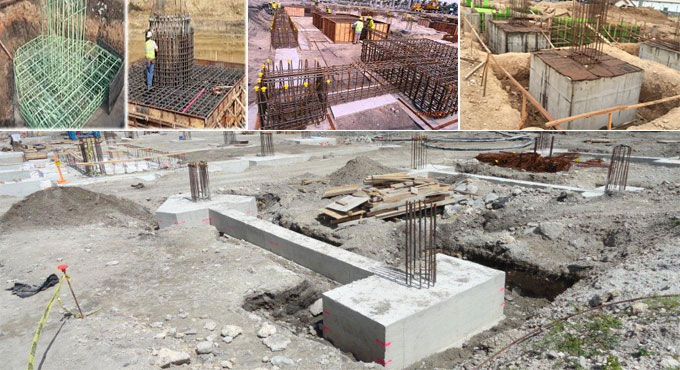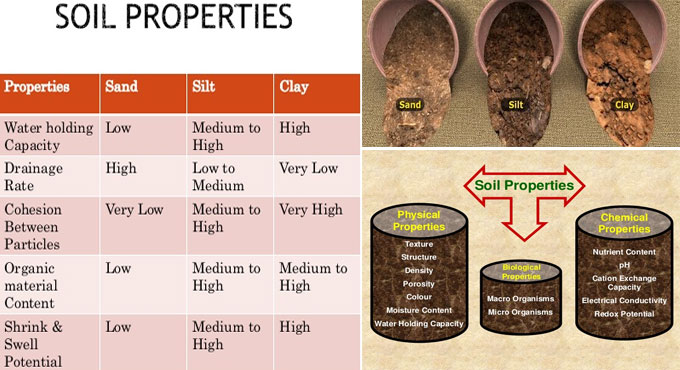Definition of Pile Cap: A pile cap refers to a thick concrete mat that is situated on concrete or timber piles driven into soft or unsteady ground to develop a proper & secure foundation. It normally builds up section of the foundation of a building, mostly a multi-story building, structure or support base for heavy equipment.
It is frequently found that one pile can’t bear the entire load enforced on the column. Therefore, the column requires over one pile to bear the load. Here, a pile cap plays an important role to disperse the column load to these piles uniformly.
In this stage of design, precautions should be undertaken to disperse the load to the piles evenly by placing the center of gravity of the column to match up with the center of gravity of the pile cap.
To make sure that the load is transmitted from the column to the pile, the pile steel reinforcement should be expanded inside the pile cap with minimum 600 mm so that the load is transmitted with the bond among concrete and steel.
The pile caps are designed as a rigid foundation and ensure that the piles bear equivalent loads from the column in order that the pile cape thickness should be designed to withstand the punching stresses and the tension in top and bottom.
Shape and Size of Pile Caps:
1. The shape and plan dimensions of the pile cap are based on the number of piles in the group and the gapping among each pile.
2. These pile caps outlines & minimizes the plan area for uniform arrangement of piles about the load.
3. The pile cap should overlap exterior piles by minimum 150mm but should not be too much, usually not in excess of the diameter of the pile diameter.
It reduces the plan area as well as the cost, at the time of arranging adequate length to the followings:
1. Affix the tension reinforcement with a large radius bend
2. Provide sufficient cover to the reinforcement
3. Meet the tolerances of the construction
Depth of Pile Cap - The depth of pile cap is influenced by the following factors :
1. Shear strength of pile cap (beam and punching shear)
2. Shrinkage and swelling of clay
3. Frost attacks
4. Pile anchorage
5. Water table and soluble sulphates
6. Maintain bolt assemblies for steel columns
Shear is considered as most important factor for selection of depth of pile cap.
Normally a pile cap is much deeper as compared to a pad footing having similar dimensions, since it is prone to greater concentrated reactions, and accordingly to much greater bending moments and shear forces.
However, the increased depth assigns greater rigidity to the pile cap that results in spreading the load uniformly to all piles.

Read more
~~~~~~~~~~~~~~~~~~~~~~~~
Published By
Rajib Dey
www.constructioncost.co
~~~~~~~~~~~~~~~~~~~~~~~~
It is frequently found that one pile can’t bear the entire load enforced on the column. Therefore, the column requires over one pile to bear the load. Here, a pile cap plays an important role to disperse the column load to these piles uniformly.
In this stage of design, precautions should be undertaken to disperse the load to the piles evenly by placing the center of gravity of the column to match up with the center of gravity of the pile cap.
To make sure that the load is transmitted from the column to the pile, the pile steel reinforcement should be expanded inside the pile cap with minimum 600 mm so that the load is transmitted with the bond among concrete and steel.
The pile caps are designed as a rigid foundation and ensure that the piles bear equivalent loads from the column in order that the pile cape thickness should be designed to withstand the punching stresses and the tension in top and bottom.
Shape and Size of Pile Caps:
1. The shape and plan dimensions of the pile cap are based on the number of piles in the group and the gapping among each pile.
2. These pile caps outlines & minimizes the plan area for uniform arrangement of piles about the load.
3. The pile cap should overlap exterior piles by minimum 150mm but should not be too much, usually not in excess of the diameter of the pile diameter.
It reduces the plan area as well as the cost, at the time of arranging adequate length to the followings:
1. Affix the tension reinforcement with a large radius bend
2. Provide sufficient cover to the reinforcement
3. Meet the tolerances of the construction
Depth of Pile Cap - The depth of pile cap is influenced by the following factors :
1. Shear strength of pile cap (beam and punching shear)
2. Shrinkage and swelling of clay
3. Frost attacks
4. Pile anchorage
5. Water table and soluble sulphates
6. Maintain bolt assemblies for steel columns
Shear is considered as most important factor for selection of depth of pile cap.
Normally a pile cap is much deeper as compared to a pad footing having similar dimensions, since it is prone to greater concentrated reactions, and accordingly to much greater bending moments and shear forces.
However, the increased depth assigns greater rigidity to the pile cap that results in spreading the load uniformly to all piles.

Read more
~~~~~~~~~~~~~~~~~~~~~~~~
Published By
Rajib Dey
www.constructioncost.co
~~~~~~~~~~~~~~~~~~~~~~~~
